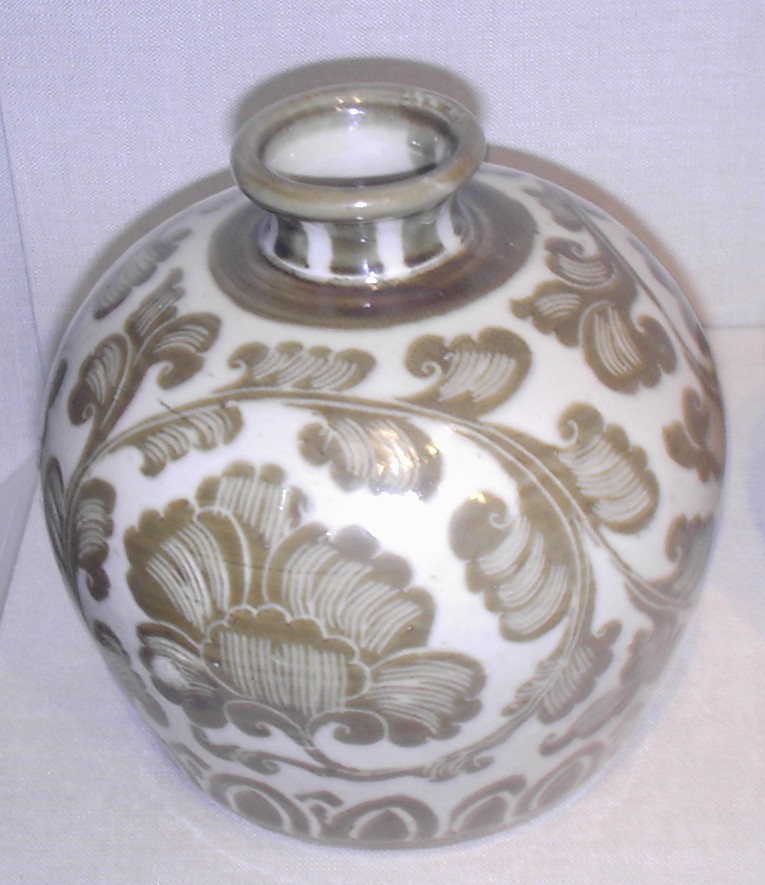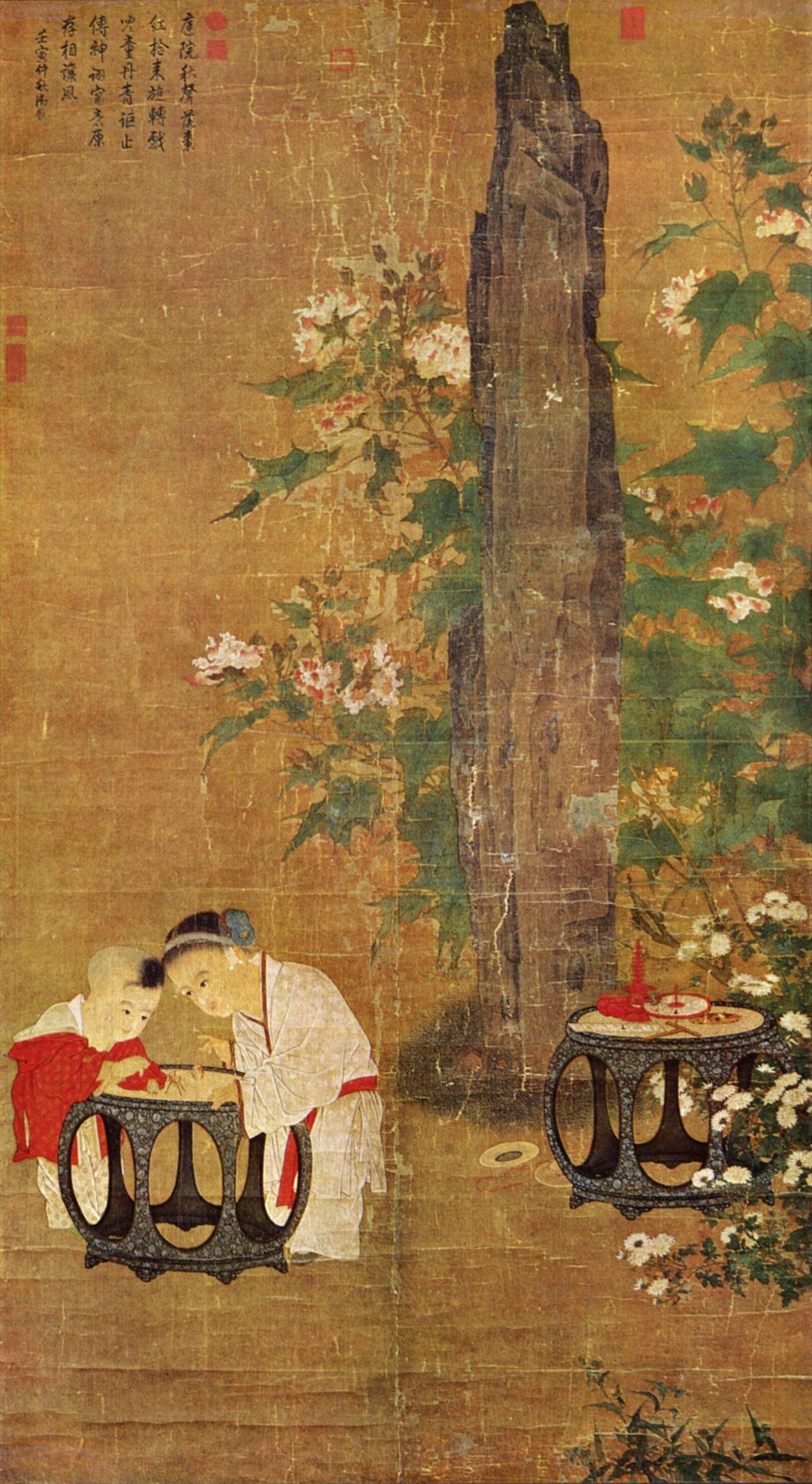|
A wooden Bodhisattva from the Song Dynasty (960–1279 AD) 
A wooden Bodhisattva from the Song Dynasty (960–1279 AD) The Sakyamuni Buddha, by Zhang Shengwen, 1173–1176 AD, Song Dynasty period. 
The Sakyamuni Buddha, by Zhang Shengwen, 1173–1176 AD, Song Dynasty period. Yuan paintingWith the fall of the Song dynasty in 1279, and the subsequent dislocation caused by the establishment of the Yuan dynasty by the Mongol conquerers, many court and literary artists retreated from social life, and returned to nature, through landscape paintings, and by renewing the "blue and green" style of the Tang era. Wang Meng was one such painter, and one of his most famous works is the Forest Grotto. Zhao Mengfu was a Chinese scholar, painter and calligrapher during the Yuan Dynasty. His rejection of the refined, gentle brushwork of his era in favor of the cruder style of the 8th century is considered to have brought about a revolution that created the modern Chinese landscape painting. There was also the vivid and detailed works of art by Qian Xuan (1235–1305), who had served the Song court, and out of patriotism refused to serve the Mongols, instead turning to painting. He was also famous for reviving and reproducing a more Tang Dynasty style of painting. The later Yuan dynasty is characterized by the work of the so-called "Four Great Masters". The most notable of these was Huang Gongwang (1269–1354) whose cool and restrained landscapes were admired by contemporaries, and by the Chinese literati painters of later centuries. Another of great influence was Ni Zan (1301–1374), who frequently arranged his compositions with a strong and distinct foreground and background, but left the middle-ground as an empty expanse. This scheme was frequently to be adopted by later Ming and Qing dynasty painters. Song Dynasty ding-ware porcelain bottle with iron pigment under a transparent colorless glaze, 11th ... 
Playing Children, by Song artist Su Hanchen, c. 1150 AD. 
|